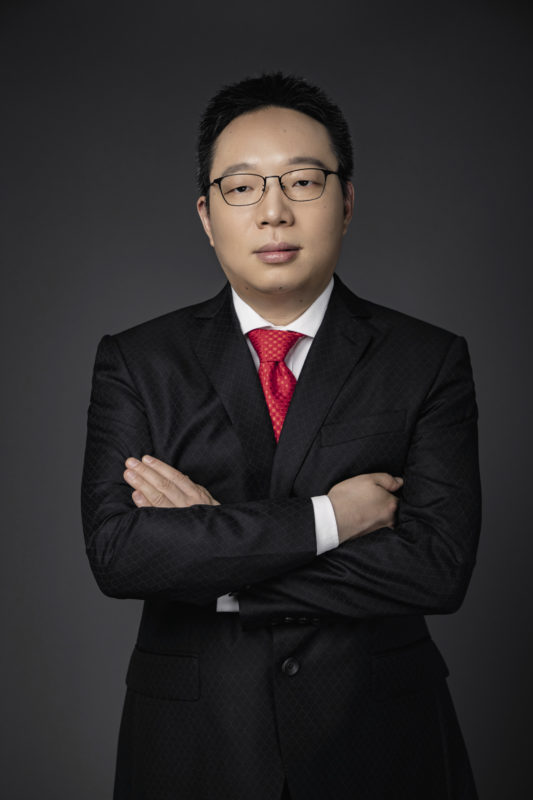
Set out on a path to make a difference in the world’s energy future, young entrepreneur David Ding started Growatt a decade ago at the age of 30. Since then, his company has moved quickly to become one of the largest rooftop inverter manufacturers in the world. High in energy and swift to make bold moves, Ding is on a mission to shift the role of user-side solar generators – to become active participants of the new energy future.
From Growatt Special Edition 2020
What inspiration led you up to the starting point of Growatt – and are the same foundational elements alive today?

Photo: Growatt
I began my career working for global power giant Eaton as an R&D engineer in its PV department in 2005. But by 2010, I was ready to do something bigger. The solar market was just getting kicked off at this time, and I had confidence in the future of the industry – and really wanted to do something significant for mankind. So I decided to establish my own enterprise at the age of 30, and set out on a mission to provide high-quality Chinese PV inverters for the world.
In 2010, solar was still an emerging industry and was primarily being deployed in European countries, the U.S., and Australia. After careful consideration I decided to enter the Australian market. There weren’t any big brands in the market yet, so I moved quickly – the market never waits. Looking back, the commitment of our R&D team was tremendous to develop new quality PV inverters. The entire team was working overtime to test the models and keep improving them. It took us less than three months to develop a new inverter in accordance with Australian grid standards. Since then, speed is the gene of our company. To date, we keep an impressive track record of developing new inverters in response to market demands. Dedication to innovation, focus on market demands, industry trends, a commitment to product reliability and excellent service – these have been the drivers behind Growatt’s fast and robust growth for the past ten years.
With so many inverter manufacturers on the market, how do you stay competitive?
We have deployed a global strategy, but stay specialized in local services. We now have 13 subsidiaries and six large warehouses around the world with regional teams for marketing, technical support, and after-sales service. Taking Europe as an example, Growatt can deliver replacements to customers within 48 hours. We take efficiency and customer service seriously. So, we upgrade products quickly according to the demand of the market and clients – and then invest 10% of our revenue in R&D every year. Of our 1,200 employees, 200 of them are R&D engineers. And then, of course, product quality management. We pursue a goal of zero defects – which requires a stringent QC system. Growatt set up a fully automatic assembly line for key components and set up our own production lines for self-developed products – which ensure quality and efficiency – but also reduces costs.
While solar is growing in scale, Growatt has decided to focus on the distributed generation (DG) market. Why?
The DG solar market is growing rapidly, it has already taken a significant share – and we believe it will become even stronger in the future. There are definitely advantages in having a core business segment. We focus on user-side smart energy solutions, especially for the residential, commercial and industrial rooftop projects – which is the realm where we have the greatest opportunity to grow and become stronger. While a leader in DG solar, we are not limited to this segment.
We developed the MAX 50-100K string inverter for small to medium commercial and ground-mounted plants, which took the top ranked position in TÜV Rheinland’s PVE test program of All Quality Matters award for high power commercial and industrial PV inverters. And our latest MAX 175-253K 1500V inverter product has 15 MPPTs and a DC/AC ratio that can reach up to 2.0.
It has become increasingly popular to install storage with rooftop PV installations. How has your company adapted to this and what are your future plans for solar+storage?
We were one of the first Chinese inverter companies to develop energy storage products. Although the storage market wasn’t big at that time, we believed that solar+storage would be the future. Currently, our off-grid and energy storage inverters cover a capacity range of 1 kW to 30 kW. Last year, we launched the first storage-ready inverter in Australia. Due to high battery prices, customers are currently using on-grid inverter applications. But in the future, as batteries become even cheaper, customers can easily upgrade to storage systems. In Australia and Europe, the solar+storage inverter solution is already being well received by users. We are doing a lot of work in optimizing storage systems to support smart grids with fast response and smart dispatch.
Smart is the name of the game for the industry right now. With digitization, IoT, and AI advancements, what does the PV home of the future look like?
A smart home includes many aspects – household appliances, access controls, security systems, etc. The energy management system acts as the brain of the PV system while the inverters are like the heart, pumping blood, or electricity, to the various smart devices. They also assume the responsibility of security for the entire system. The inverter monitors the grid and provides protection, and is also responsible for friendly interaction with users.
A new lifestyle of ‘smart+comfort’ is the future. It’s really built upon IoT, Big Data and AI, and it involves the smart dispatch of energy storage, O&M, and user-side power management to maximize solar energy efficiency. We developed a smart home energy management system that perfectly integrates solar+storage, EV and IoT devices. It’s a one-stop solution that combines high-efficiency power generation, safe power storage, smart power consumption, real-time energy control, and centralized management of energy information. The technologies of Big Data and AI deep-learning are used to support the prediction of energy generation and consumption, and to enhance the smart control functions. That creates a complete ecosystem for a green smart home.
So what is next for innovation in inverter technology?
Currently, the electrical and electronic technologies of PV inverters have become increasingly mature. I believe that the directions for future innovation in this space will mainly come from several arenas. First, technological innovations and upgrades will be at the component and module level, and applied for the optimization of PV inverters. Second will be at the system application level – focused on PV system safety such as AFCI protection and RSD on the one hand, and smart O&M on the other – especially innovations built upon IoT and Big Data – which redefines application for conventional energy industries. And lastly, the trend of interconnections between distributed generation solar PV systems and smart dispatch, basically the establishment of an ‘energy internet.’
Lắp đặt điện mặt trời Khải Minh Tech
https://ift.tt/2X7bF6x
0906633505
info.khaiminhtech@gmail.com
80/39 Trần Quang Diệu, Phường 14, Quận 3
Lắp đặt điện mặt trời Khải Minh Tech
https://ift.tt/2ZH4TRU
Không có nhận xét nào:
Đăng nhận xét